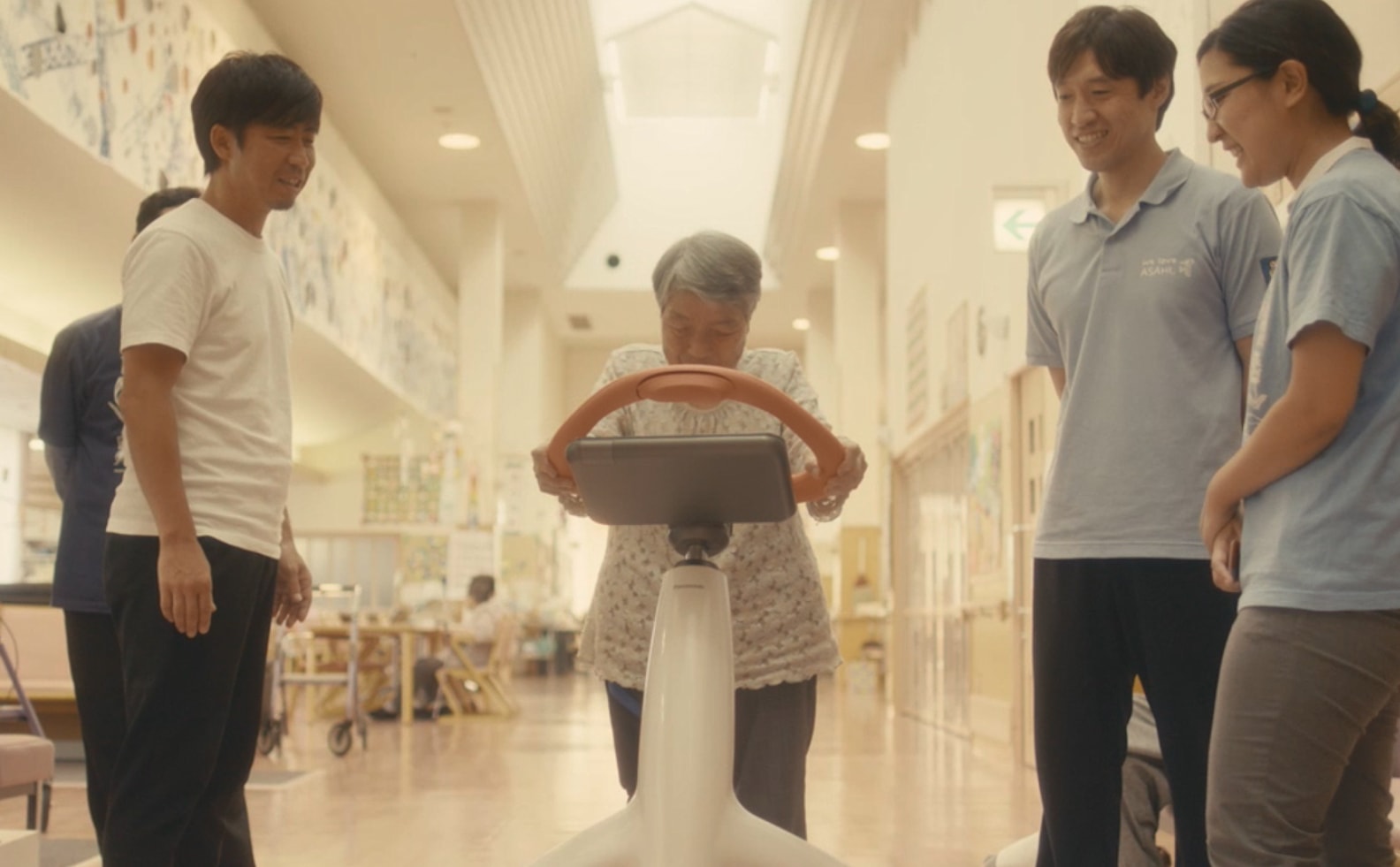Thirty-six point eight five million people. That’s the number of elderly people, defined as those aged 65 and over, who will be living in Japan in 20301. This figure constitutes an astonishing one-third of Japan’s population. For Japan, which officially became a “super-aging society,” one in which more than 21% of the population is elderly, in 2010, this aging demographic profile is bringing a wide range of issues to the fore. The key to solving this problem is extending the healthy lifespan of individuals. If citizens can live long lives with a high level of independence and good health, numerous problems will solve themselves. So how can Panasonic contribute?
Our designers and engineers worked on this question as a close-knit team. The solution they happened upon was a training robot that enables and inspires people to keep walking all their lives.
1 Population Projections for Japan, National Institute of Population and Social Security Research (IPSS), January 2012 (in Japanese)
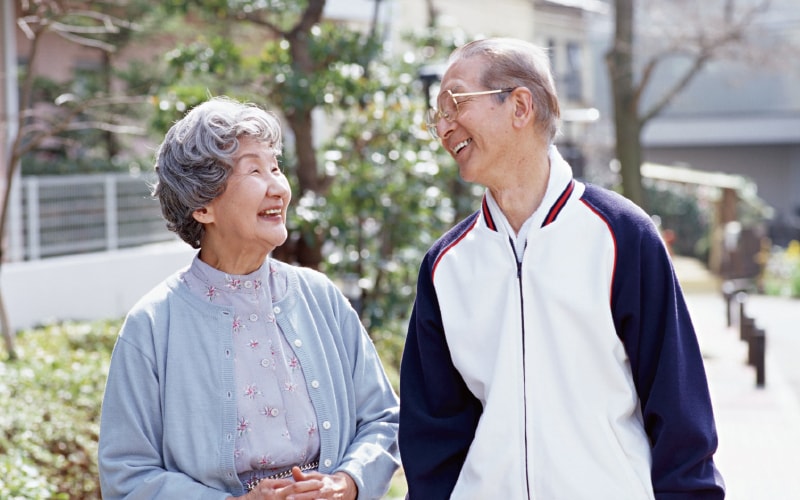
To extend healthy lifespan, the robot is designed to motivate people, so that they want to exercise of their own accord.
In an aging society, extending healthy lifespan is critical. To live independently until well into old age, people must be able to walk on their own two legs. Unfortunately, although Japan has the longest average lifespan of any country in the world, only about 10% can live in good health and walk independently to the very end2. Training the elderly to keep walking is effective in supporting muscular strength, but this task is not as simple as it sounds. To encourage people to exercise consistently, the burdens of exercising, both psychological and physical, must be alleviated. The needs of staff members at medical and nursing-care facilities must also be taken into account. For these busy professionals, establishing a training regimen of maximum efficiency and effectiveness is a crucial point. Could Panasonic combine its strengths in technology and design to motivate the elderly to pursue exercising? The challenge was to create a design that transforms physical exercising from a necessary nuisance into an enjoyable experience, one the elderly would pursue willingly and joyfully.
2 Hiroko Akiyama, Social Structure in the Age of Longevity, Kagaku (Science), Iwanami Shoten, 2010 (in Japanese)
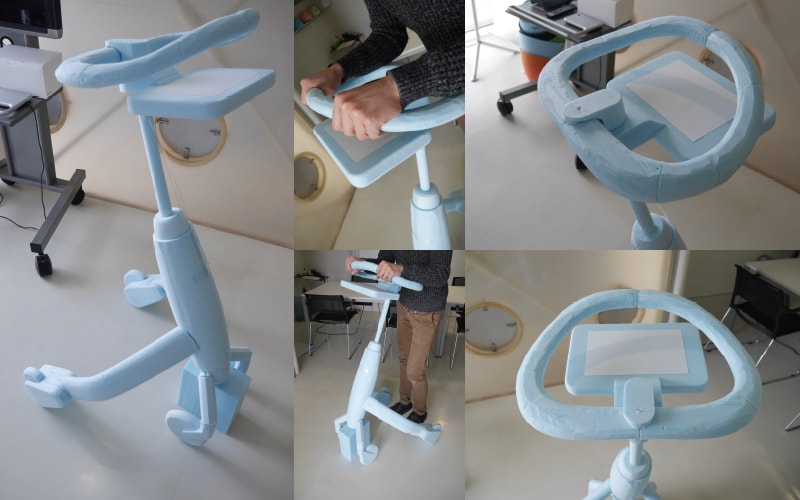
Through repeated trial-and-error, Panasonic searched for a shape people would want to operate.
The first task was to create a shape that people would want to use. To start the ball rolling, our engineers created Models 1 and 2, and the entire team worked on a comprehensive overhaul of the shape. How could they make it visually appealing? And how could they make it easy to use, for people of all physiques and health conditions? Wearing harnesses designed to simulate the condition of an elderly person, team members tested the device with a variety of tubes and cushioning appended, repeatedly modifying the shape using foam-plastic models. What they discovered was an angle of inclination and handle position that encourage the user not to lean on the device but to push it from a natural stance. This arrangement demonstrates the intended posture for walking in an encouraging, appealing manner. A pleasingly round shape was adopted for the handles, enabling users to change where they grip the device according to their individual stage of training. Through repeated testing, it was found that the ideal thickness for the grips was close to that of a grandchild’s wrist. The undercarriage was designed with large front wheels, to secure safety and ease of operation.
Guided by the concept of a revised framework that encourages physical activity, the team devised the walking training robot from the ground up.
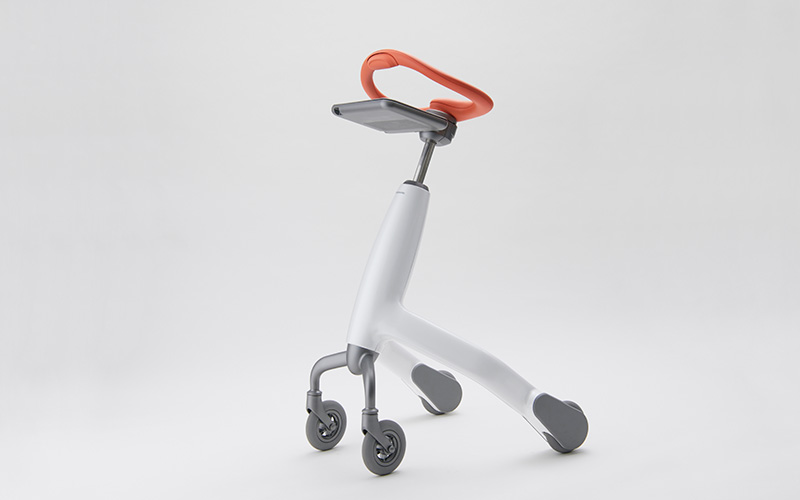
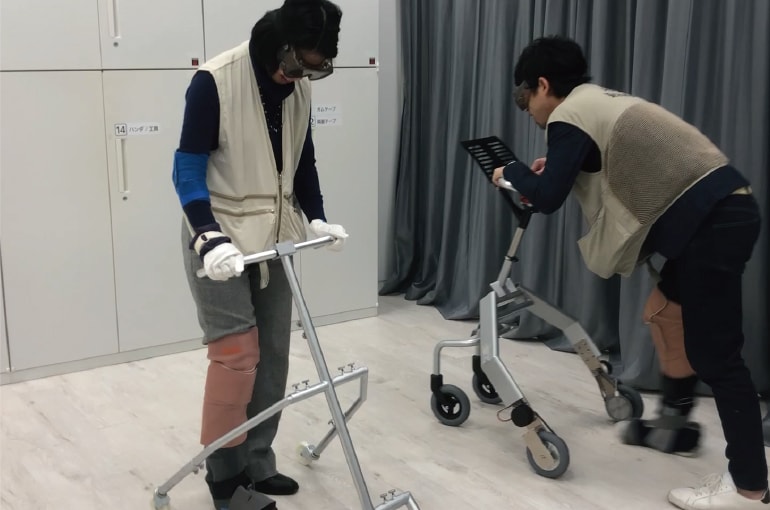
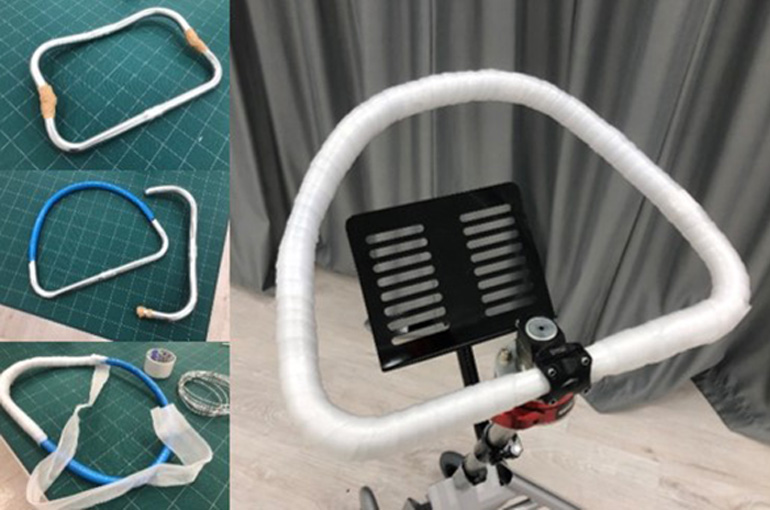
Further design enhancements keep users motivated.
To encourage users to stick with their exercising, the robot had to be easy to use while providing encouraging feedback. For these needs, interface design was critical, and several innovations were implemented. As the user walks, the screen displays a tachometer, providing feedback on progress and making the robot fun to use. Information on the user’s status, such as how much the user leans into the robot during use, is made intuitively understandable through large graphics and a bright color palette. A high-visibility display enables even those with poor eyesight to confirm their progress easily, encouraging them to correct and improve their performance. Next, to create a sense of communication with the robot, the team prepared a library of friendly messages, calling the user by name and talking about each day’s targets. Finally, information about the day’s exercise is displayed using easy-to-recognize, anthropomorphic icons, so that anyone can use the robot intuitively.
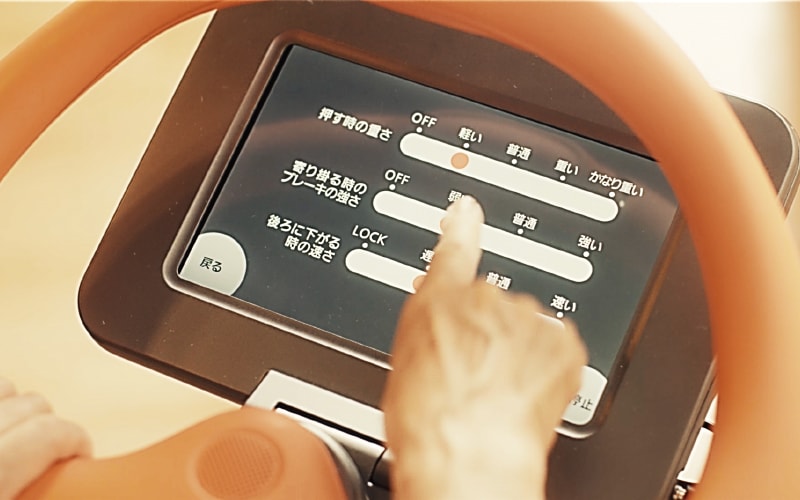
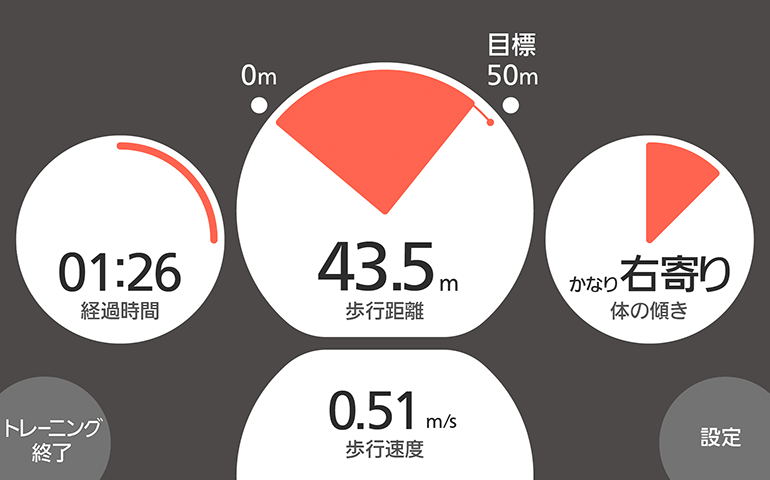
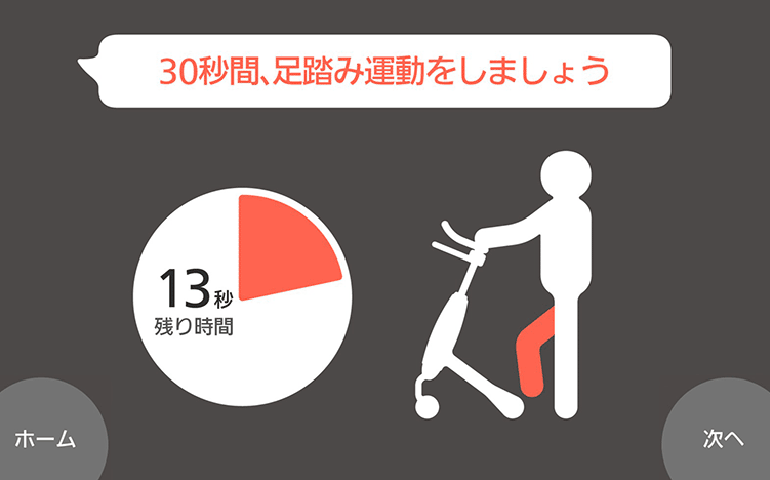
The design also takes into consideration the feelings of the medical and nursing-care staff members who support the robot’s users.
Numerically displayed targets and results provide not only users but also staff members with easy-to-understand performance indices. Logs are recorded, enabling easy comparison of today’s performance with that of last week or a month ago. The robot can provide specific and helpful feedback, such as, “You’ve improved, but you’re still leaning a little to the right. Let’s keep working on it!” Other features are designed with staff members’ work routines in mind. To receive subsidies, for example, institutions have to fill out a raft of forms. The robot automates this process using AI, dramatically reducing paperwork by eliminating the burden of filing individual reports after each treatment case. Freed from this drudgery, busy staff can use the time they’ve gained to focus on caring for patients and residents. In this way, by taking the time to learn about conditions at the site of care, the Panasonic team was able to reduce caregivers’ workload, thereby incorporating concern for their feelings into the design.
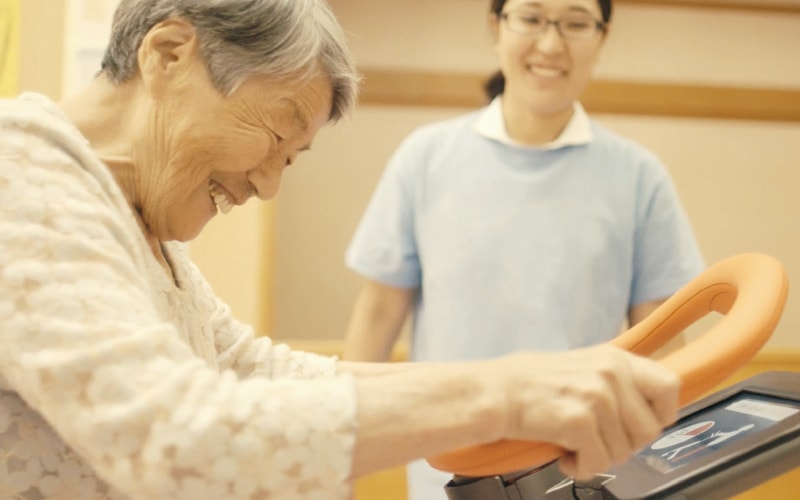
By removing barriers, we found a way to make elderly people smile.
People in their 90s are often taciturn, talking and interacting little with others. But after they start walking using the walking training robot, they begin to make conversation. Long-vanished smiles return to their faces. Panasonic is proud that, by tearing down the walls between their respective fields and working as a team, its designers and engineers could point the way to a solution to one of Japan’s most intractable issues.

